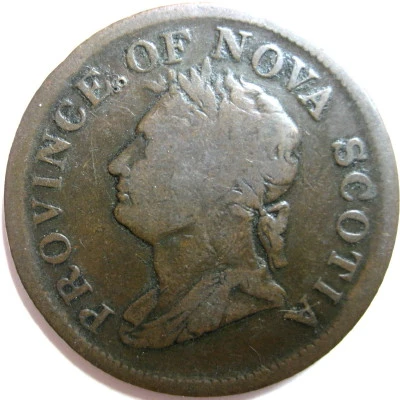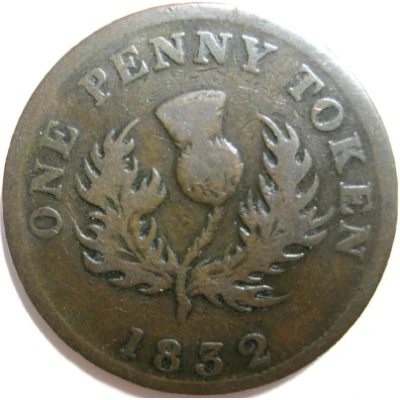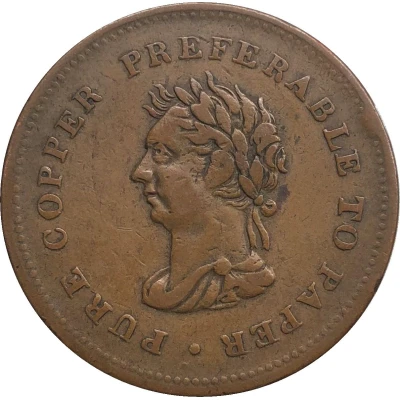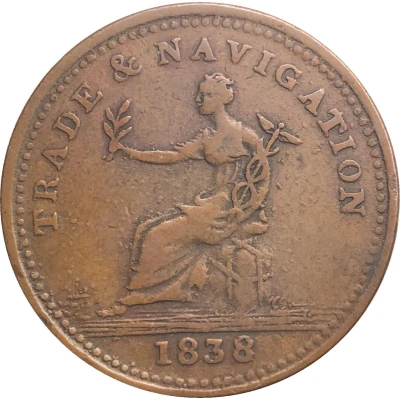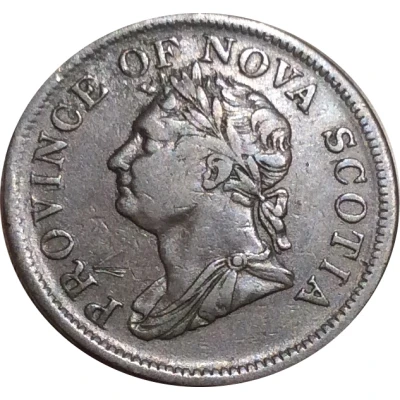
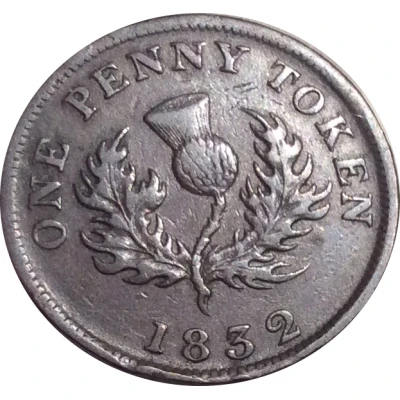

© Histo50
1 Penny Token - George IV counterfeit
1832 year| Copper | 14.7 g | 33.7 mm |
| Issuer | Nova Scotia (Canadian provinces) |
|---|---|
| Type | Token |
| Year | 1832 |
| Value | 1 Penny (1⁄240) |
| Currency | Pound (1812-1860) |
| Composition | Copper |
| Weight | 14.7 g |
| Diameter | 33.7 mm |
| Shape | Round |
| Technique | Milled |
| Orientation | Variable alignment ↺ |
| Demonetized | Yes |
| Updated | 2024-10-04 |
| Numista | N#98219 |
|---|---|
| Rarity index | 80% |
Reverse
Thistle surrounded by lettering, date below.
Script: Latin
Lettering:
ONE PENNY TOKEN
1832
Edge
Engrailed, reeded, Plain
Comment
Weight: 12.8 - 16.6 g
Diameter: 33.5 - 34.0 mm
NS-4A1 Flat top 1, Copper, Engrailed
NS-4A2 Left top 1, Copper, Engrailed
NS-4A2a Left top 1, Copper, Reeded
NS-4A2b Left top 1, Copper, Plain
NS-4A3 Left top 1, Brass, Engrailed
NS-4A4 Right top 1, Copper, Engrailed
NS-4A5 Right top 1, Brass, Engrailed
NS-4A1, 4A2, and 4A4 are found with narrow and wide rims.
Cast copies exist.
Wiley believes these tokens were struck in Montreal and circulated in Nova Scotia. Jacobs (newer thought) believes they were struck at the Belleville Mint in New Jersey and circulated in Upper Canada. Both agree on the time, circa 1835.
Interesting fact
The A Token 1 Penny Token - George IV (counterfeit) 1832 from Nova Scotia (Canadian provinces) made of Copper weighing 14.7 g is an interesting coin because it is a counterfeit coin that was created in the 19th century. Despite being a fake, it is still a valuable collector's item for numismatists who study and collect coins. The fact that it is made of copper and weighs 14.7 grams adds to its unique characteristics and historical significance.
